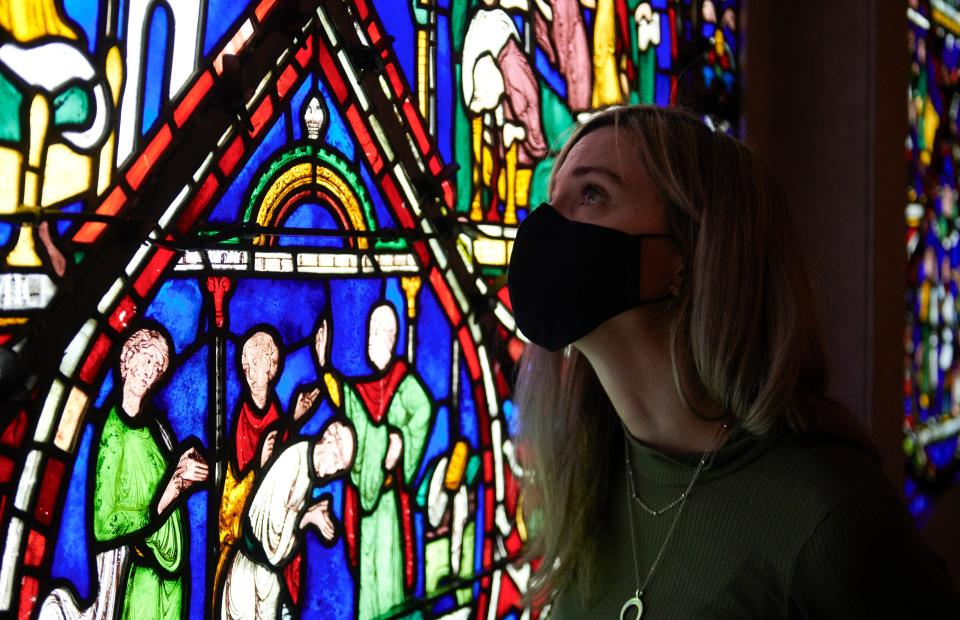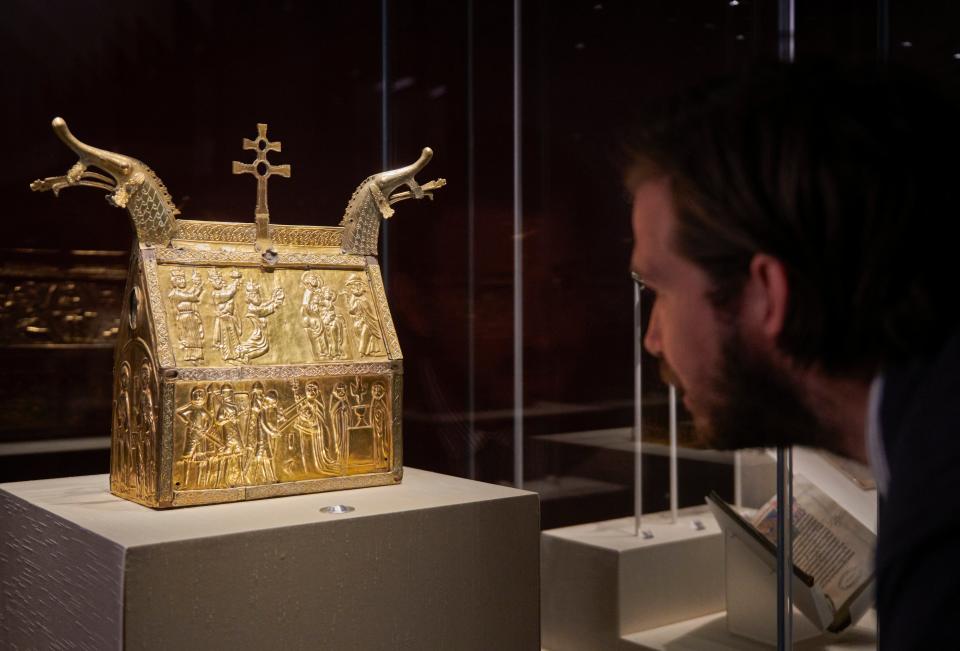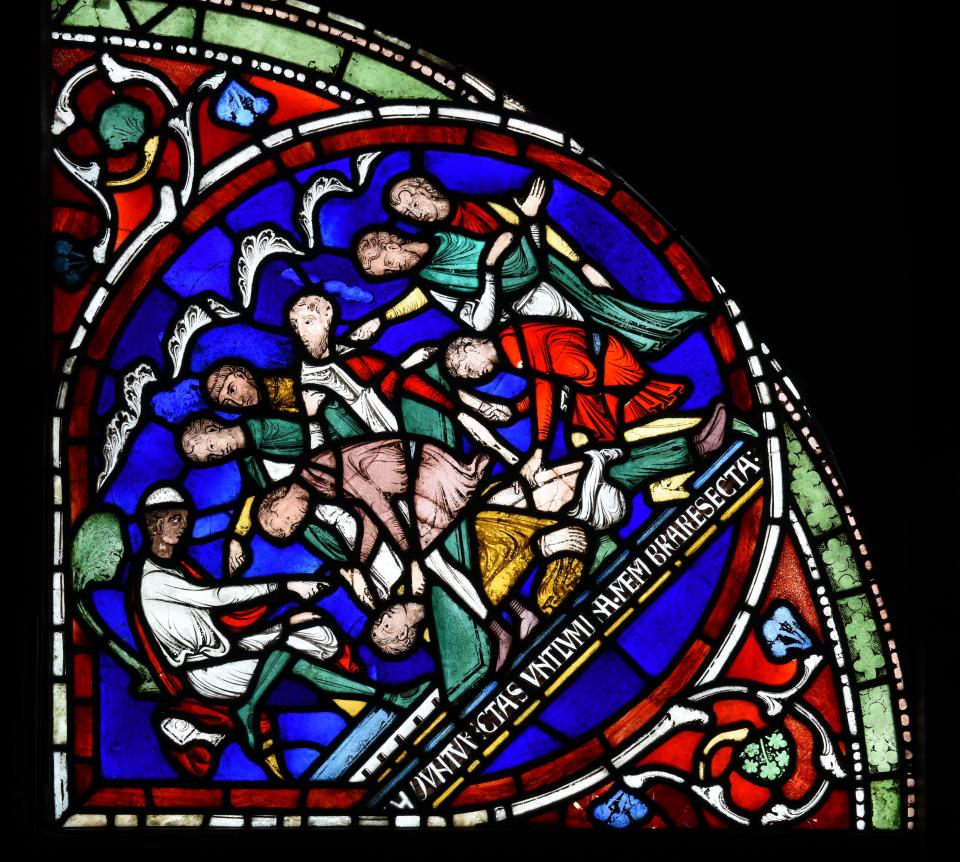Thomas Becket: murder and the making of a saint review - this horrifying story resonates through the centuries

The 850th anniversary of the birth of the great Londoner, Thomas Becket, was in 2020 and this exhibition was originally timed to coincide with it. Alas, you-know-what put paid to the celebrations, so the British Museum is now marking the 851st anniversary of his birth. No matter. The sources aren’t precise about dates and this is as good a year as any to see the wonderful artefacts brought together to mark Becket’s life and death. Chief of them are the stunning stained glass windows from Canterbury Cathedral, which glow in fantastical blues and assorted greens and yellows and purples. They’re taken from the top of tall windows… this may be the first time in 800 years that it’s been possible to see the lively detail of the stories in the glass this close up.
But there’s much besides. As we know, Becket was struck down at the altar of Canterbury Cathedral in 1170 by four of the king’s knights – one of whom stirred up his spilled brains with the point of his sword. What’s remarkable is how fast the story spread around Europe, how fast Becket was canonised afterwards and how widespread devotion to him became. There are two eye-catching loans from Sweden: one, a beautiful baptismal font from a little rural parish church, showing the king giving orders to one knight, while the others set out, like so many Noggins the Nog, to do his bidding. Another is a copper reliquary showing the execution; the lid is decorated with two dragons’ heads, like a Viking longship.

The show brings home both Becket’s London origins and its, and his, cosmopolitanism. He was born in Cheapside (there’s no mention here of the legend that his mother was, excitingly, a Saracen princess) and the curators have gone to pains to suggest the vitality of the twelfth-century city. There are bone skates to show how boys skated on the frozen river, some gaming pieces, and a stone capital, with entwined serpents, from a church that Thomas would have known. Thomas may have spoken French at home; his father was a merchant in a polyglot mercantile city; he went to Paris to study: the world he inhabited was anything but inward-looking.

There are objects he owned here – Thomas’s own (antique Roman) seal and an illuminated gospel he commissioned. There are treasures from his time including a twelfth-century mitre, thought to be one he left in France in his exile, and an alabaster panel showing his consecration, with traces of its vivid colours. England was famous in the middle ages for exquisite needlework and carved alabaster.
But it’s not just static objects; there’s an effective dramatic rendering of the murder projected on the wall. It concludes with the Tudors and the banning of Becket by another bad King Henry – the Eighth. Best of all, there’s a reliquary at the end, with an actual tiny bit of his skull – cue for a trigger warning as you enter. This story resonates, even now.
Thomas Becket: murder and the making of a saint. British Museum. 20 May-22 August
Read More
Church artefacts likely to be removed following contested heritage guidance
Murder of St Thomas Becket a ‘John F Kennedy moment’, archbishop to say
Philip had ‘remarkable willingness’ to take hand he was dealt in life – Welby

 Yahoo Finance
Yahoo Finance 